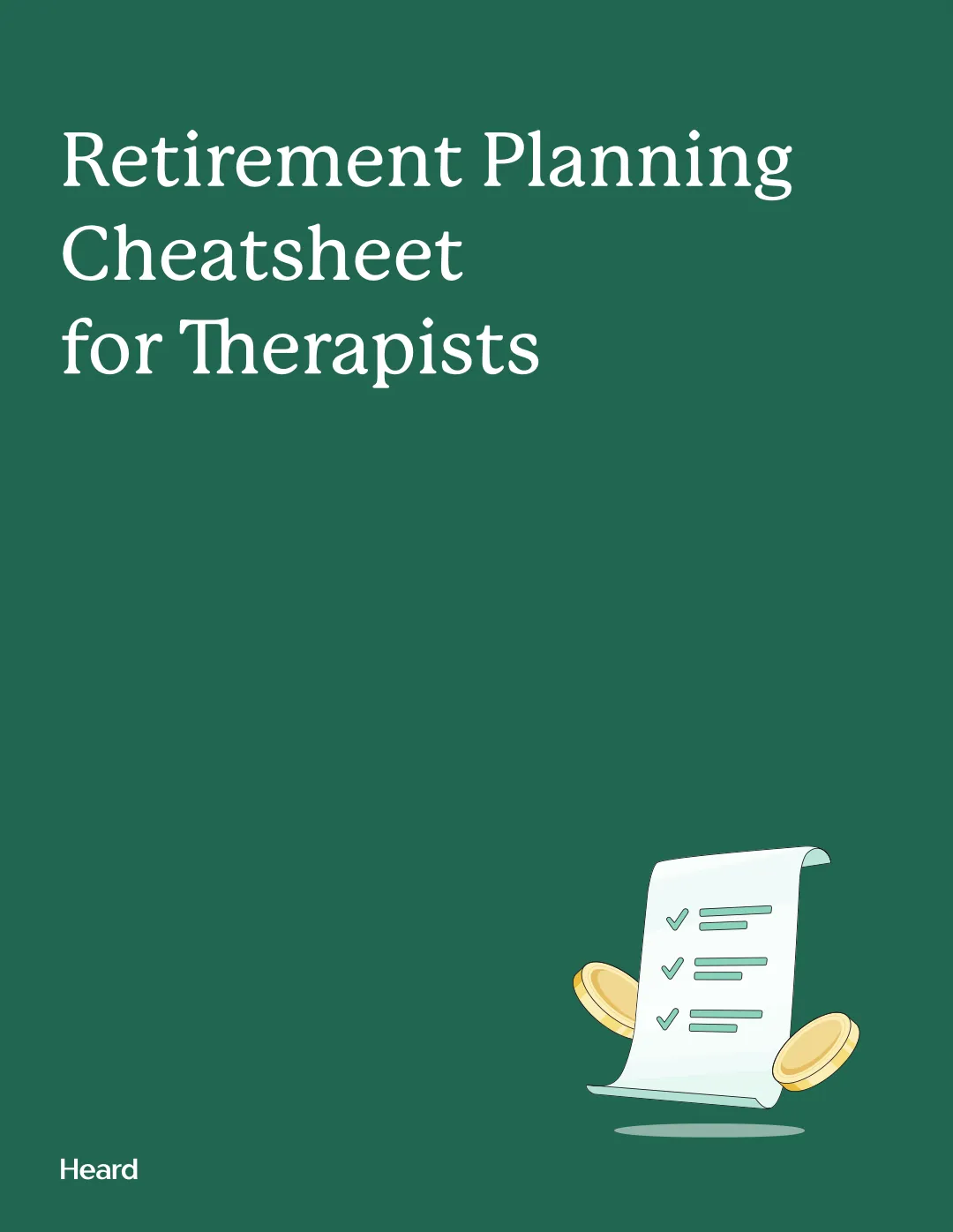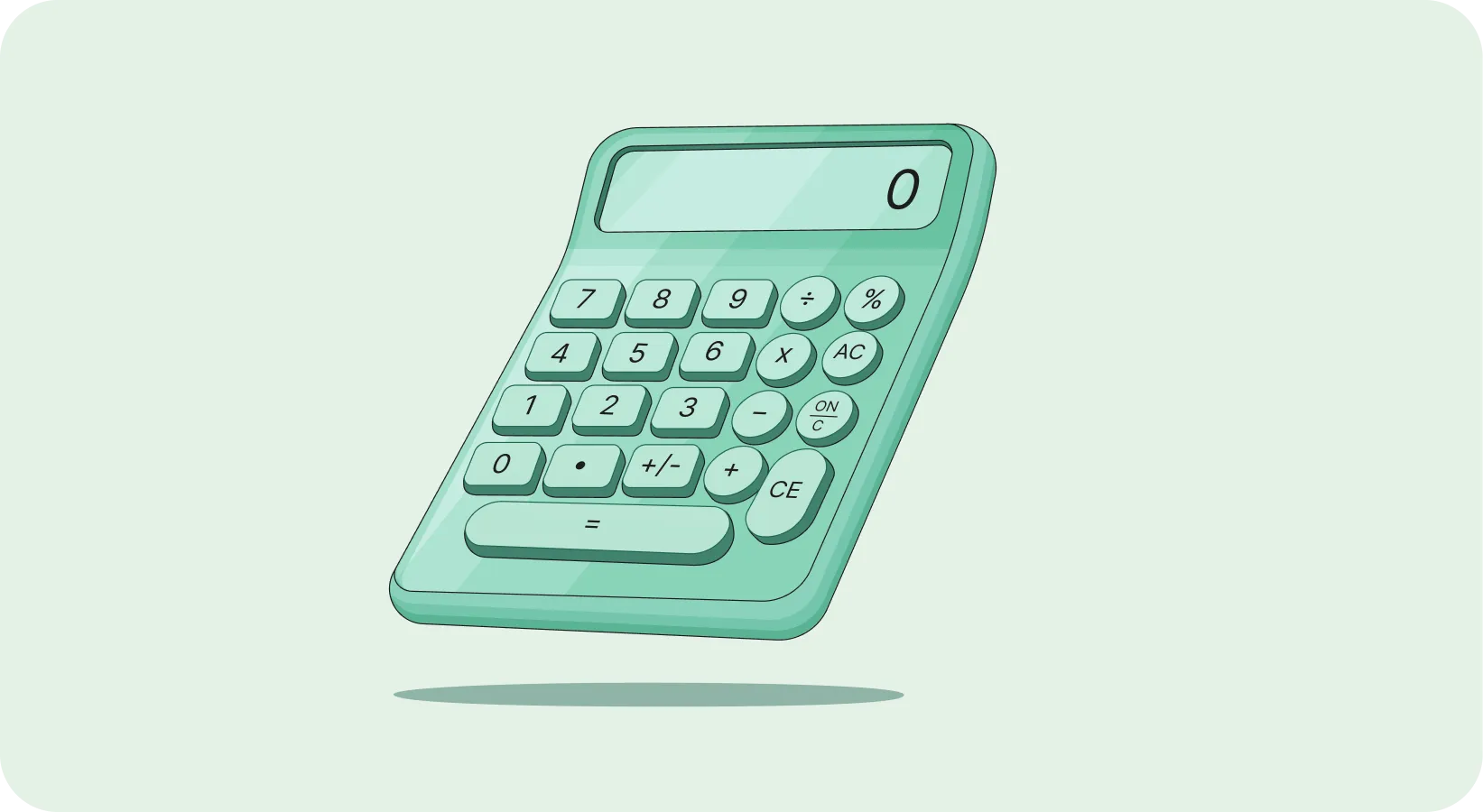Can a self-employed therapist ever afford to retire? When you’re busy with the day-to-day business of running a practice and paying the bills, the chances may seem slim. But with a little planning now, you can look forward to one day closing up shop and enjoying the fruits of your labor.
Here’s a step-by-step guide to help you plan for your retirement as a self-employed therapist by setting aside enough funds to let you live comfortably during your golden years.
Calculate your annual retirement income
To figure out how much you need to save for retirement now, the first step is to figure out how much you will need to pay yourself each year after you retire. For that, you will need to calculate your retirement expenses.
Your retirement income is the amount you withdraw each year from your savings to cover your living expenses. In order to set this amount, you need to be realistic about how you plan to live after you retire.
Pro tip: Plan for a similar lifestyle both before and after retirement
Some people skimp on spending during their working lives, squirrelling away every spare cent to save for retirement. Their plan is to spend lavishly once they retire.
Others spend freely now, putting away the bare minimum for retirement. They plan to live a much more modest lifestyle after they retire.
Many in the first group, the big savers, reach retirement and find they don’t know how to spend the money they’ve saved. After forty-plus years of pinching pennies, saving has become instinctual. They can’t bring themselves to spend their nest egg on travel or expensive hobbies.
Many in the second group, the big spenders, reach retirement and suddenly find they need to make drastic changes to their lifestyles. Used to buying whatever they want when they want it, they can now no longer afford to indulge themselves. They either fail to adapt to a tighter budget, and go through their savings quickly; or they manage to adapt, but they’re unhappy because they can’t live the way they want to.
Experience shows that the best rule of thumb is to plan for a lifestyle similar to the one you lead now. If that means frequent vacations abroad and pricey hobbies, factor those expenses into your plans for retirement. If it means a more modest lifestyle, plan for that instead.
The less drastic the change when you retire, the easier a time you’ll have adapting to your retirement income.
Break down your current living expenses
You may already have a good idea of how much you need to earn each year to cover your expenses. But for the sake of detailed planning, break it down into individual expenses.
Reviewing past bank and credit card statements, or data from budgeting apps, determine how much you spend each year on expenses like:
- Your mortgage or rent
- Property taxes
- Utilities
- Groceries
- Transportation
- Debt payments
- Car payments and other financing
- Vehicle maintenance and repairs
- Childcare
- Pet care
- Long-term savings (including savings for retirement)
- Medical bills
- Insurance
- Entertainment, including travel and hobbies
The total cost of these expenses is the total annual income you currently need to earn. That will set a baseline from which to determine your retirement income.
Modify your current expenses for retirement
By the time you retire, your cost of living will change. Some expenses will decrease or disappear, and others will increase.
Take your current living expenses and modify them to account for retirement. The expenses most likely to change are:
- Your mortgage. If you’re on track to pay off your mortgage, factor that in. If you go into retirement owning your house, you will not need to cover monthly payments.
- Groceries. After retirement, when they have more time to cook, people often spend less on eating out or ordering in and prepare their own meals instead. Figure out whether this is likely to be the case for you.
- Debt payments. Your debt will change over time. If student debt payments put a drain on your finances, plan for the day when they will be paid off. If you are currently working to get free of debt from credit cards or loans, plan for how that will change your finances in the future.
- Transportation. If commuting to work is a significant expense, plan for the cost of transportation to decrease after retiring.
- Car payments and other financing. You may plan to pay off your vehicle—or your future vehicle—by the time you retire. In that case, you won’t need to make financing payments. Also consider other financed items that may be paid off by the time you retire.
- Vehicle maintenance and repair. Your vehicle maintenance costs may decrease if you no longer commute to work.
- Childcare. If you have children, you already know the impact they can have on your finances. Plan for this expense to decrease or disappear once your children reach adulthood.
- Long-term savings. Naturally, once you retire, you will no longer need to put away savings for retirement. Other long-term savings—such as college funds for your children, or money towards a downpayment on a house—may also disappear.
- Medical bills. As you age, the cost of health insurance and other medical spending increases. An issue brief from the Employee Benefit Research Institute (EBRI) says that Americans aged 50 – 64 spend, on average, 7.6% of their income on healthcare. Above age 65, this amount increases to over 10 per cent. Account for this change when figuring your future expenses.
- Insurance. You may need to pay new insurance premiums as you get older. In particular, long term care insurance can cover the expense if you eventually need to enter a care facility or have a caretaker work in your home. Someone turning 65 today has an almost 70% chance of eventually requiring long term care. Factor the cost of long term care insurance into your calculations.
- Entertainment. As mentioned above, the best strategy is usually to enjoy a lifestyle now close to the one you anticipate during retirement. But if you have special plans for retirement—sailing around the world, joining an archaeological expedition, or collecting rare orchids, for instance—then factor in the cost.
Once you have modified your current income to account for changes after retirement, you will know how much you will need available each year, in savings, to spend.
{{resource}}
Decide when you will retire
Changes to social security now put the full retirement age at 67.
But you may have other plans. If you love your work as a therapist, you may not plan to retire until you are well into your 70s.
Alternatively, you may already be making big plans for retirement, and aiming to leave the workforce before you hit your 60s.
Whatever the case, it’s important to be realistic. Even if you love running your own therapy practice now, it’s possible that in 30 or 40 years you will feel differently.
Changes to the field of psychotherapy—how it’s practiced, and what clients expect—may mean your profession looks different a few decades from now than it does today. That could affect how long you want to keep practicing.
On the other hand, if you hope to retire early, keep in mind the significant impact this will have on your savings plans. You will need to cover more years of income with your savings, which means saving more now.
Finally, you may be planning to work part-time to support your retirement. But according to one EBRI report, while 71% of those surveyed said they planned to work in retirement, only 31% currently do. You may want to have a fallback—extra funds in your savings—in case you find you are unable or unwilling to work after retirement. That could require you to plan for a later retirement.
Once you set an age for retirement, it’s time to calculate how long you will spend as a retiree.
{{resource}}
Plan the length of your retirement
Traditional retirement savings plans assume you will need to cover your expenses for 25 or 30 years after you have retired.
If you plan to retire early, you will naturally need to plan for a longer retirement, meaning you will need to save enough to cover 35 or even 40 years.
At this point, it is also a good idea to look at your family’s health history. If you have multiple great aunts who have celebrated their 100th birthdays, you may also stand a good chance of becoming a centenarian. That could mean a longer retirement. It could also mean more concrete plans—including extra savings—for long-term care.
Calculate your total necessary savings
The formula for calculating the total retirement savings you need is simple enough. Multiply your annual retirement income by the length of your retirement.
For instance, if you anticipate needing $90,000 per year to cover expenses after you retire, and you plan a retirement lasting 25 years, that’s a total savings of $2.25 million.
Once you know how much money you need to save, you can start planning how to save it. This is a good time to sit down with a financial planner who can help you put together a strategy.
That could include:
- Adjusting your current budget to set aside more funds for retirement
- Planning to scale up how much you set aside for retirement as other expenses decrease (mortgage, childcare, or student loan debt)
- Increasing retirement savings as your income rises
- Making safe long-term investments that help your savings grow
- Planning to eventually sell your practice
{{resource}}
Retirement savings accounts for therapists
Employees may enjoy the benefit of a retirement plan set up by their employer. But when you’re self-employed and run your own therapy practice, it’s up to you to set up your own plan.
If you are setting up a plan through your business, your choice will be affected by whether you have employees. Retirement plans and other benefits can help attract and retain clinicians, so you may want to choose the plan that is most beneficial to the people working for you.
On the other hand, if you run a solo practice, you may have more freedom when it comes to choosing retirement plans.
Types of retirement plans for your therapy practice
Retirement plans fall into three categories:
- Defined benefits plans. Traditional pensions fall into this category. These plans guarantee the employee a monthly or yearly income after they retire.
- Defined contribution plans. Rather than defining a specific amount an employee receives after retirement, a defined contribution plan consists of an amount withheld from each paycheck and sometimes a matching amount contributed by the employer. The 401(k) is the most popular defined contribution plan.
- Individual Retirement Accounts (IRAs). These accounts are designed for self-employed people who are setting aside funds for retirement.
Pensions
Pensions in the private sector are becoming rare; only 15% of employees have them. Because of the cost of setting up and maintaining a pension plan, it’s not a viable option for most small businesses.
401(k)
An employee has the option of redirecting a portion of their paycheck to a retirement savings account and investing the money. The employer may choose to match 401(k) contributions with their own funds.
Depending on the type of 401(k), contributions may be taxed either when they are contributed or when they are withdrawn.
If your therapy practice has employees, a 401(k) is a good, flexible option for retirement benefits.
IRA
An IRA is suited to self-employed therapists. It’s relatively quick and easy to set up, and can include a wide range of funds. An IRA account has a maximum contribution. As of 2025, that limit was $7,000 annually for those under the age of 50 and $8,000 for those aged fifty plus.
Some IRAs allow you to defer tax on contributions until you make withdrawals in retirement, while others charge tax now and allow you to withdraw funds tax-free later.
This is a brief overview of retirement plans. For a deeper dive, check out How to Choose a Retirement Plan for Your Therapy Practice.
Key takeaways
- Determine your annual income in retirement by calculating your current yearly expenses and modifying them for your financial situation after you retire
- Medical bills and certain types of insurance are likely to be more expensive after retirement, while other expenses—like mortgage and childcare—are likely to decrease
- As a rule of thumb, plan to lead a lifestyle in retirement with an amount of non-essential spending similar to the one you lead now
- Multiply your yearly spending plans for retirement by the length of your retirement to determine how much you need to save
- A financial advisor can help you create a retirement savings plan
- Setting up a 401(k) may make sense if your practice has employees, while an IRA is better suited to solo practitioners
—
Want to learn more about planning for retirement? Learn how to choose a retirement plan for your therapy practice.
This post is to be used for informational purposes only and does not constitute legal, business, or tax advice. Each person should consult his or her own attorney, business advisor, or tax advisor with respect to matters referenced in this post.
Bryce Warnes is a West Coast writer specializing in small business finances.
{{cta}}
Manage your bookkeeping, taxes, and payroll—all in one place.

Discover more. Get our newsletter.
Get free articles, guides, and tools developed by our experts to help you understand and manage your private practice finances.





